The Independent's journalism is supported by our readers. When you purchase through links on our site, we may earn commission. Why trust us?
Best Irish whiskeys for St Patrick’s Day 2025 and beyond
Get St.Paddys Day ready with these tried and tasted tipples
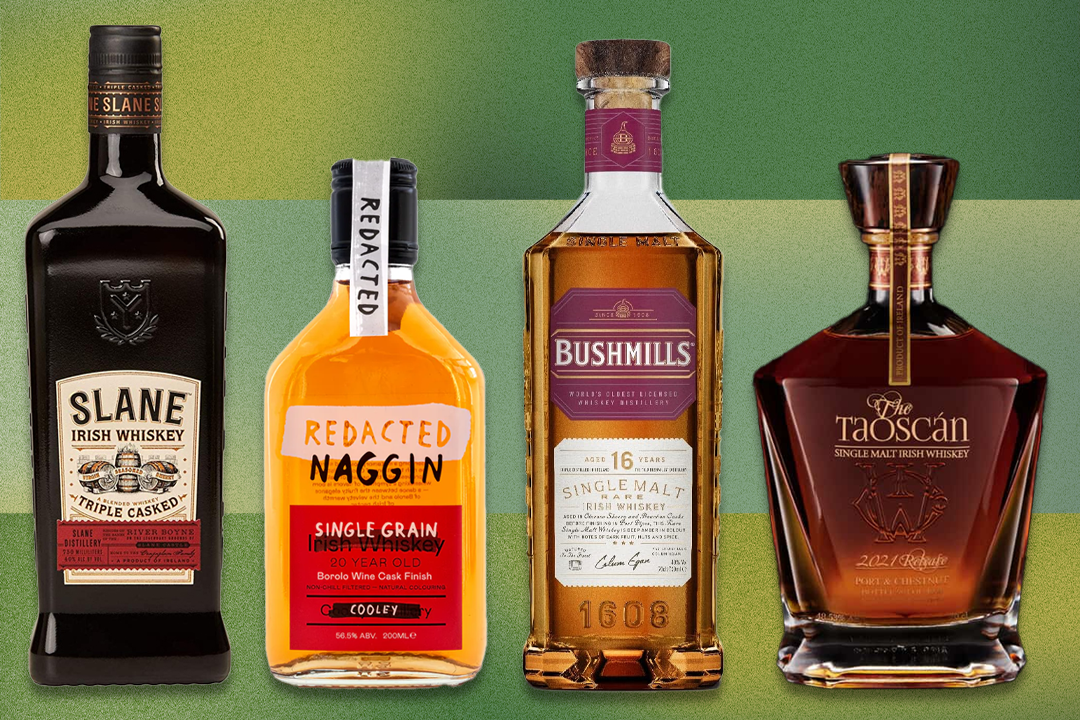
St Patrick’s Day is just around the corner and we know just the thing to put you in the spirit. It may surprise you to know that Irish whiskey was once the most popular spirit in the world. Towards the end of the 19th century, the ‘golden age’ saw it flourish worldwide. Just a century later, however – due to world, civil and independence wars; the US Prohibition; and a trade war with Great Britain – the popularity of the tipple plummeted to a staggeringly low one per cent of what it once was.
Were it not for a secret meeting between century-old rivals within the Jameson, Powers and Murphy families, Irish whiskey as we know it may have ceased to exist. Thankfully, that meeting took place, and, putting their differences aside, a deal was struck. This turning point for a country with so much liquid heritage paved the way for change, and Ireland began to rekindle its love with the dram. Fast-forward to today and the commitment to investment and innovation when it comes to the liquid gold of Ireland has never been so strong.
With new distilleries and projects blooming, it’s such an exciting time for Irish whiskey. The signature light and smooth expressions are better than they’ve ever been, but there’s also a flourishing variety, with delicious wine finishes and even a little peat to play with. These bottles – whether exceptionally made purist blends or masterstroke finishes – represent the best of this new golden age.
How we tested
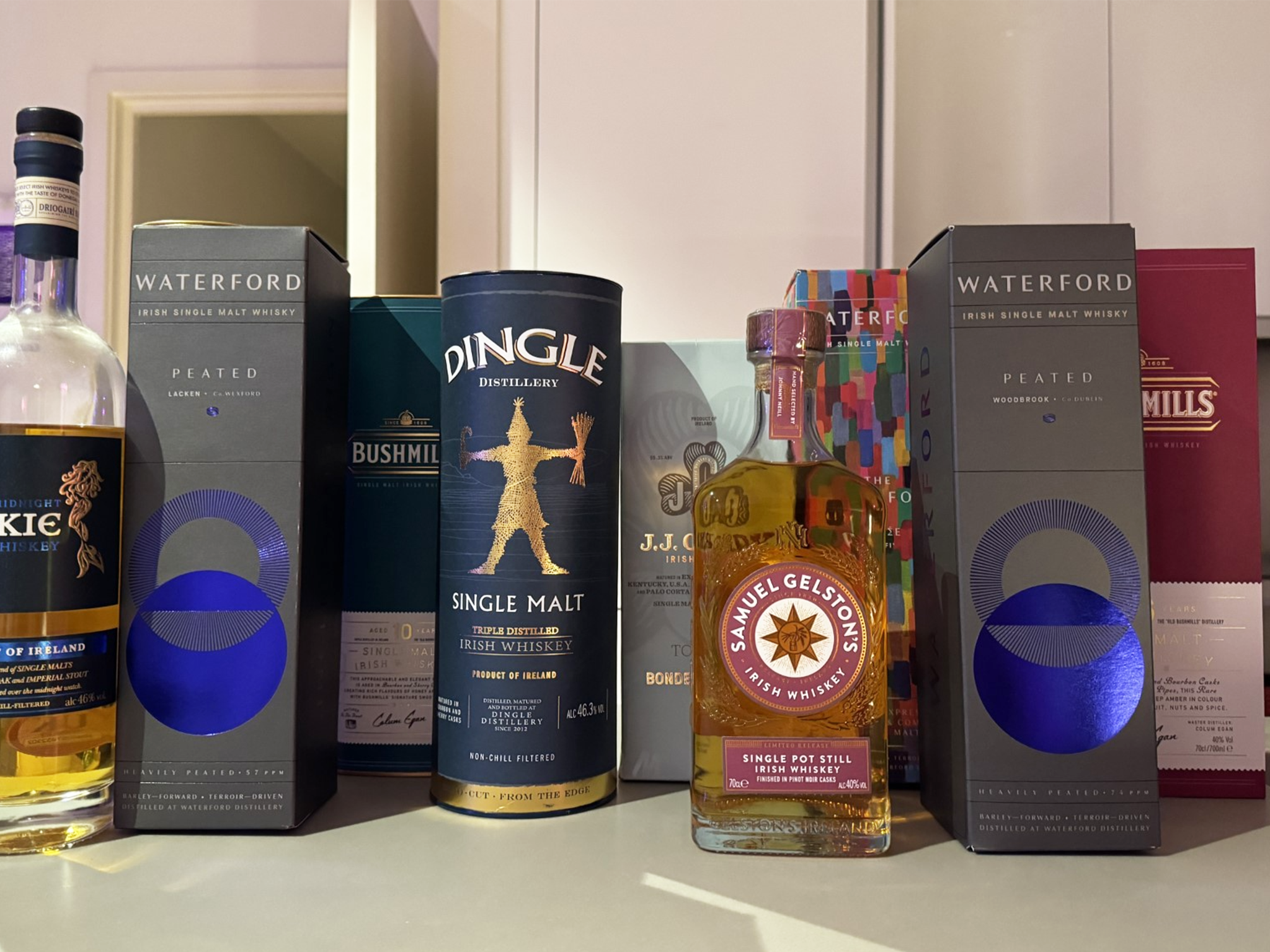
All Irish whiskeys were tasted and tested in two distinct scenarios to determine their ranking. Firstly, we wanted to get an idea of how they performed when drunk neat. Each whiskey was tasted in pure form, then with a few drops of water and finally with a large cube of ice. This allowed us to get an idea of how they evolved, so we could rate their aroma, concentration and depth of flavour.
Our second test was to taste each whiskey with a simple mixer and in the most famous whiskey cocktail: an old fashioned. Each whiskey was tasted and tested blind, so as not to allow packaging or any other external factors to affect the decision.
The best Irish whiskeys for 2025 are:
- Best overall – Sliabh Liag the legendary silkie Irish whiskey: £40.25, Thewhiskyexchange.com
- Best budget buy – Slane Irish whiskey: £26.95, Houseofmalt.co.uk
- Best single malt – Bushmills 16-year-old single malt: £86.38, Amazon.co.uk
1Sliabh Liag the legendary silkie Irish whiskey

- Best Overall
Legend goes that silkies are seals with the ability to shapeshift into humans on land, and this tipple might be just as enchanting. This soft grain whiskey is a blend of double and triple distilled malts with a moreish hint of peated smoke. With no chill filtering, it’s wonderfully rich with ripe red fruits, oaky, biscuity sweetness, and lingering spice. It’s just so devilishly drinkable.
2Slane Irish whiskey

- Best Budget Irish whiskey
- Size 700ml
- ABV 40%
The beautiful Salen Castle is known for two things. First, the iconic gigs of Queen, Bowie, U2, Bob Dylan, Madonna and more. Second, the excellent Slane Irish whiskey.
Three different casks fill out the silky-smooth liquid, with butterscotch, vanilla, dried fruits and baking spice from virgin oak, oloroso and ex-Tennessee whiskey and bourbon casks. It’s a solid blended whiskey that punches way above its price point. Explore it neat but know it’s also a dream in Irish coffee, with those toasted notes playing up deliciously.
3Green Spot Château Léoville Barton whiskey

- Best For sipping neat
- Size 700ml
- ABV 46%
This special whiskey celebrates the coming together of two historic families. To take Green Spot’s single pot still Irish whiskey in a new and exciting direction, it’s been finished in the oak casks of prestigious Bordeaux winery Château Léoville Barton. Even before this, it’s matured in traditional sherry and bourbon casks, so, by the time bottling comes around, this is packing a real punch.
Woodland oak invites the nose, which, alongside spice and vanilla sweetness, coats the mouth beautifully. Fresh orchard fruits bring a little dryness before an everlasting fruity finish with lingering spice. France and Ireland combine with mouthwatering results.
4Waterford peated Lacken Irish whiskey
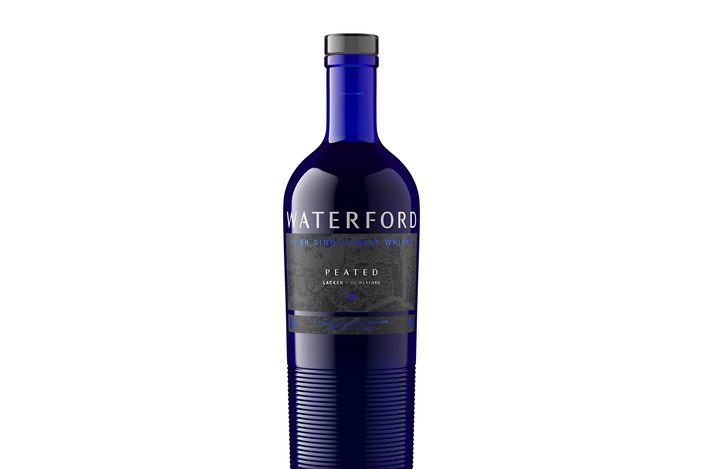
- Best For peat lovers
- Size 700ml
- ABV 50%
This pick shows what Irish whiskey can do with peat. Barley grown in Lacken Farm County Wexford makes an expression inspired by the old methods, while the peat is harvested in County Kildare.
It’s the smoke that is the star of the show, with intense fruity and ashy notes. Lapsang souchong tea, orchard fruit and white peach fill out the palate before the campfire vibe lingers on. An ambitious and characterful rejuvenation of Irish peat that will leave smoke-loving fans of whiskey in a state of pure excitement.
5Glendalough double barrel whiskey

- Best Crowd pleaser
- Size 700ml
- ABV 42%
The Glendalough glacial valley in County Wicklow is a fascinating spot that’s home to a rich slice of history – from the 6th-century monks who once inhabited the lands to the world-famous lead mines where people from all corners of the country came to seek their fortune.
Glendalough has a pedigree in experimenting, with delicious results. This whiskey is double aged, first in flame-charred ex-Bourbon oak casks, then in special oloroso casks from Montilla. The two create such complex depth, with sweet dark fruits, honey, and vanilla, all before a peppery, ginger warmth kicks in. It’s a serial award-winner for good reason.
6Jameson Crested Irish whiskey

- Best For people who say they don’t like whiskey
- Size 700ml
- ABV 40%
The world’s best-selling Irish whiskey led the charge for the new golden age, being hand-picked for big French investment at the time. As with anything so wildly popular, it might not be the connoisseur’s choice, but it’s a fabulously well-rounded accessible whiskey.
The Crested expression brings sweeter notes of sherried fruit, apricot and peach, alongside a tingle of spiced nuts and subtle, creamy chocolate. It has impressive complexity and smoothness for the price.
7Teeling 1991 24-year-old Irish whiskey

- Best Aged statement
- Size 700ml
- ABV 46%
Producing some extraordinary whiskeys, Teeling is known for being the family to bring distilling back to the heart of Dublin. Distilled back in 1991, when Irish whiskey remained a sleeping giant, this is something of an antiquity. Aged initially in bourbon barrels before a transfer to sauternes casks, this really is a one-off.
Smoky peated malt is present from start to finish, while ripe tropical fruit and honey sweetness come through deliciously. With so much maturity, there is a lot more going on in the depths, too, with a shade of herbaceous green in there, lemon and lime bittersweetness, delicate orange and persistent freshness. A historic explosion of flavour.
8Redbreast Irish whiskey Lustau edition

- Best For an evening dram
- Size 70cl
- ABV 46%
This is the result of the coming together of Bodegas Lustau and Midleton Distillery, and it is a top-notch representative of how sherry casks can lift Irish whiskey. Nine to 12 years of American and European oak creates tantalising depths of chocolate, toasted almond, cinnamon, and walnut, before the oloroso sherry grabs the baton for another year, infusing poached plum and juicy sultanas. It showcases a creaminess on the mouthfeel and a seemingly endless finish that is to die for. There are two decades of complexity to explore here.
9JJ Corry seven-year-old whiskey bonder’s edition

- Best Rare Irish whiskey
- Size 70cl
- ABV 58%
In the golden age of Irish whiskey, towards the end of the 19th century, distilleries often sold their product in bulk to bonders who would mature the bottles at their pubs or stores, to avoid paying duty. These eventually disappeared, but the Irish whiskey revival has ushered in a return.
JJ Corry was the first of these new bonders in more than 50 years. Seven years in the making, this limited-edition whiskey (just 132 bottles) began its ageing in a Woodford Reserve bourbon cask, before finishing in an amontillado sherry cask. Think stewed apples and pears, earthy hazelnuts, and luscious, intense dried fruits.
10Bushmills 16-year-old single malt

- Best Single malt
- Size 700ml
- ABV 40%
Home to the Giant’s Causeway, Bushmills is one of the few “grain to glass” distilleries in Ireland. Every bottle of whiskey is crafted in small batches on-site. The single malt is a triumphant creation, embarking on a flavourful journey. Aged for 16 years in a combination of bourbon-seasoned and oloroso sherry casks, it is then matured for a further 12 months in port wine barrels. The result is a divinely juicy, sticky, nutty and spicy malt, offering the perfect marriage of smoothness and richness.
11Kilbeggan whiskey

- Best For mixers and highballs
- Size 700ml
- ABV 40%
The oldest distillery of its kind in all of the Emerald Isle, Kilbeggan takes its name from one of the Twelve Apostles of Ireland, who founded a 6th-century monastery nearby. With the distillery falling on hard times in the 1950s, the town rallied to save it, keeping its legendary history intact.
Distilled just twice rather than thrice means nutty and characterful peat is retained, which intertwines gorgeously with honeyed fruit sweetness. It offers impressive value, too.
12Naggin Redacted 20-year-old Irish whiskey barolo finish

- Best For a special treat
- Size 20cl
- ABV 56%
In Ireland, a naggin is a 200ml bottle usually packaged up in a hip flask shape to sneak into places. It’s also a great way to get a taste of mind-blowing whiskeys that would cost a lot more for a bigger bottle.
This single-grain Irish whiskey is non-chill filtered, with natural colouring, and has 20 years of masterful ageing behind it. Made at the renowned Cooley Distillery, the Barolo finish brings great body to the expression, with succulent cranberries, rich dried fruits, and hearty spice.
13The Craft Irish Whiskey Company the Taoscán Irish whiskey

- Best Luxury Irish whiskey
- Size 70cl
- ABV 46%
Say hello to the world’s first port- and chestnut-finished Irish whiskey. Just 1,000 collector’s edition bottles of this rare single malt have been produced, and it will take you on a magical journey.
The story begins with an American oak bourbon cask and oloroso butts, delivering fine cedary vanilla, luscious maple syrup and seductive musk. Then, a touch of the extraordinary, with two years of virgin chestnut and tawny port cask ageing.
This takes Taoscán – a small serve synonymous with prestigious Irish whiskey – and brings it up to date with modern expertise and experimentation. Tradition, innovation and pure whiskey artistry.
14Dingle single malt whiskey

- Best For an old fashioned
- Size 700ml
- ABV 46%
Despite being quite a new distillery, Dingle has been a major force in revitalising Irish whiskey, while also managing to produce gin and vodka. Overlooking some of Ireland’s prettiest coastline in County Kerry, the Dingle distillery is an incredible visit, but it wouldn’t be anything unless the end product was so special.
Light, soft and fruity, this is a prime example of Irish malt. Pedro ximénez and bourbon ageing deliver rich dried fruits, indulgent vanilla caramel, and seductive fruity coffee notes. Dreamy in the starring role of a honey old fashioned.
15Samuel Gelston’s single pot still whiskey, pinot noir finish

- Best For wine lovers
- Size 700ml
- ABV 40%
This rich and indulgent Irish whiskey hails from a distillery with a rich history, bottling up beauties like this since 1830 in Belfast. Triple-distilled with 50 per cent malted barley and 50 per cent unmalted, before a 24-month maturation in ex-bourbon casks, and another 24 months in French oak (ex-pinot noir), this bottle is full of flavour. Warm malt emerges on the nose, before summoning sweet honey, delicate spice, and a harmonious touch of meadow berries. Oh, and the French oak casks? They belong to none other than actor Sam Neill (Jurassic Park), who has his own New Zealand winery and has collaborated with his cousin and master distiller Johnny Neil on this beauty.
The verdict: Irish whiskey
It’s not difficult to see why there is so much excitement brewing around Irish Whiskey. This boom in interest is unearthing delicious vintage stocks alongside newer and innovative expressions that have never previously been explored. Add to that the remarkable cask finishing programmes, value for money and heritage embodied by so many of Ireland’s whiskey distilleries, and you begin to understand what all the fuss is about.
It was a difficult choice, with so much talent on the table, but our best buy overall goes to Slabh Liag and its legendary Silkie Irish whiskey. Picking up countless awards, this affordable nectar is so versatile, regardless of whether you choose to explore it neat, mixed or as part of a cocktail. An incredibly approachable flavour profile makes it the perfect choice for all palates (novice and expert alike), with a distinct character, texture and mouth-watering taste that would make any Irishman or Irishwoman proud to put their name alongside it.
Read our review of the best alcohol-free drinks to add to your home bar















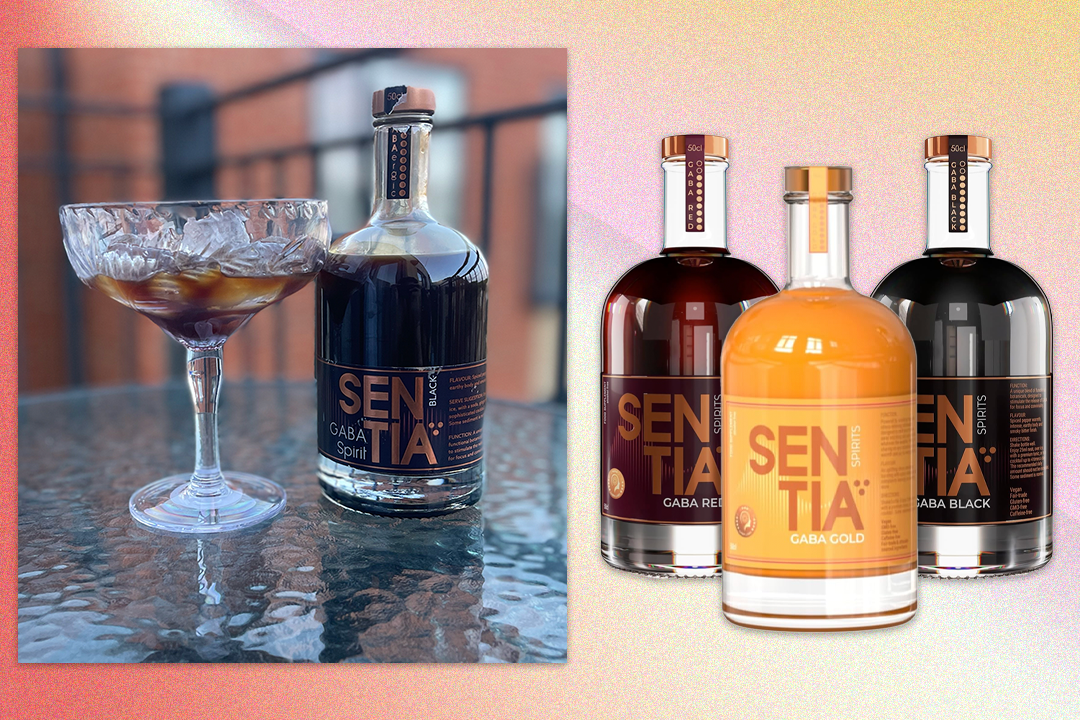

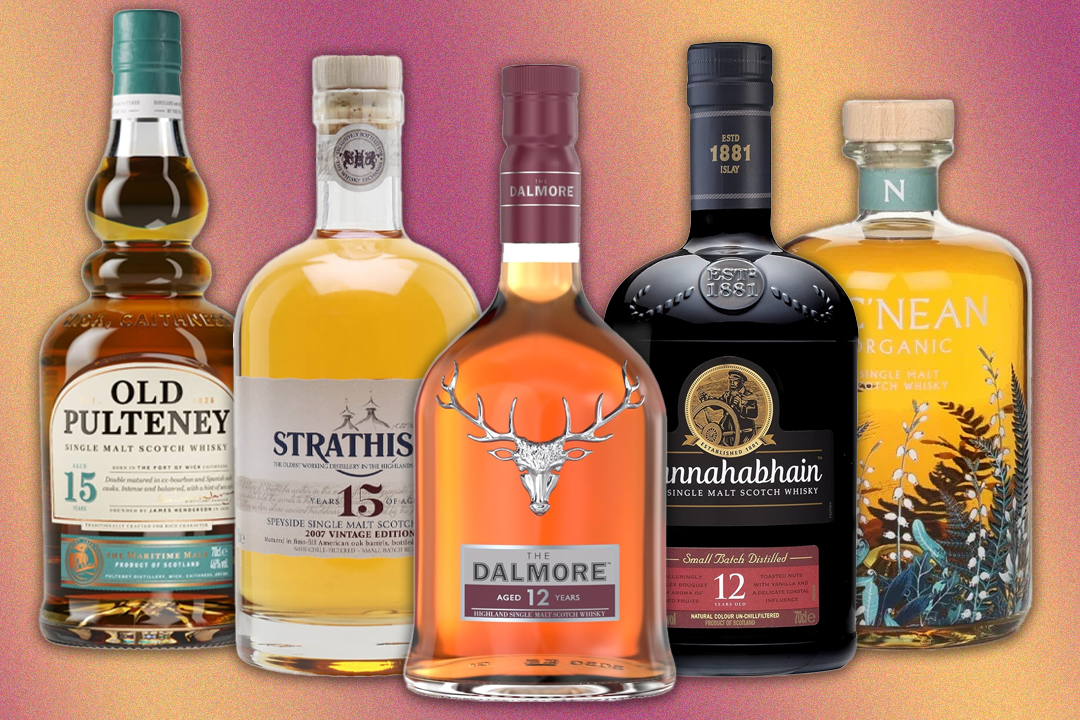
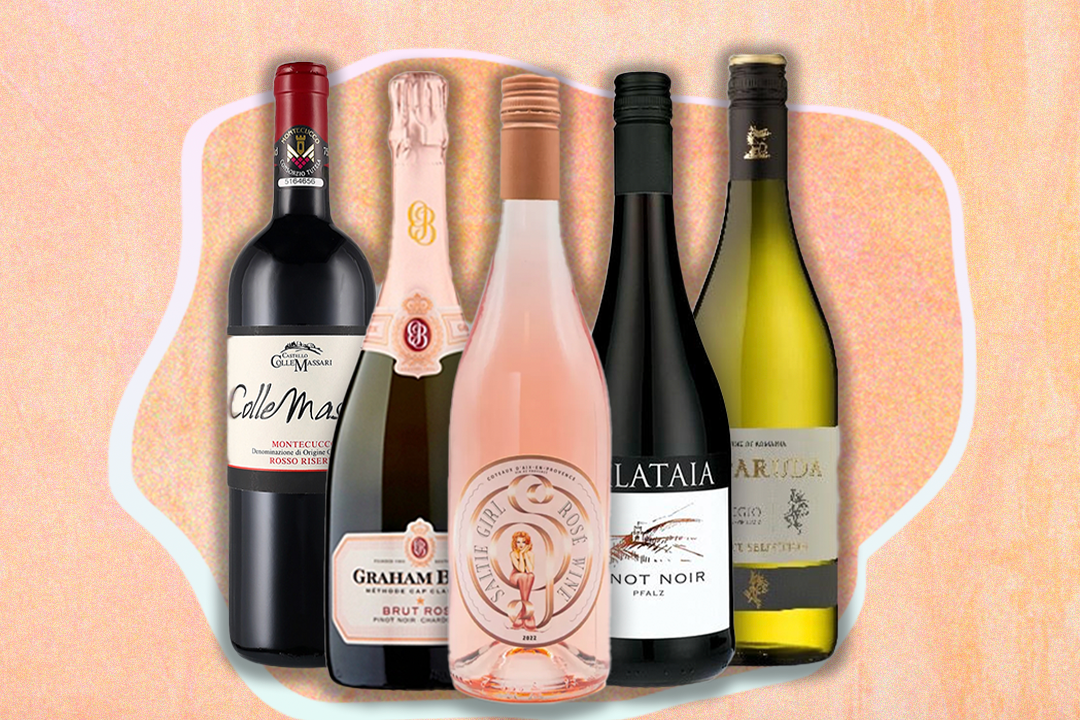
Bookmark popover
Removed from bookmarks